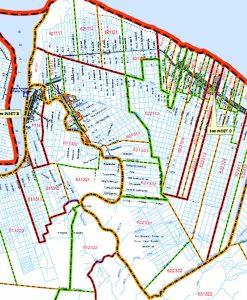Home News Large-scale survey, mapping of Guyana’s land surface begins
In an undertaking of significant importance, authorities have commenced an aerial survey and mapping exercise across the country, using the latest light detection and ranging, or LIDAR, technologies.
The Guyana Lands & Surveys Commission (GLSC) and the Food and Agriculture Organisation of the United Nations (FAO) on Tuesday announced that activities would be conducted in the coming weeks with international expertise provided by Medici Land Governance (MLG) and its partners.
The aerial survey will use an aircraft carrying LIDAR sensors and mapping cameras to collect highly-accurate and detailed LIDAR and orthophoto maps of the land surface within targeted regions.
The data collected will be processed to produce digital terrain models and map imagery for extracting infrastructure, water features, and 3D building models.
The resulting data would then be entered into key layers to update the national base maps, which are more than 50 years old.
At the end of this exercise, in excess of 500 square kilometres of the urbanised land area, nearly all of Guyana’s urban footprint, and over 15,000 square km of the rural areas will be surveyed using this new technology.
GLSC Commissioner Enrique Monize explained that even though LIDAR has been used before in Guyana, this is the first large-scale activity that also combines traditional imagery with that of LIDAR for mapping purposes in the country.
This activity is part of the objectives of the Sustainable Land Development and Management (SLDM) project, which seeks to advance technology in land management and development. The project is being implemented by GLSC and the FAO with funding from Guyana’s REDD+ Investment Fund.
